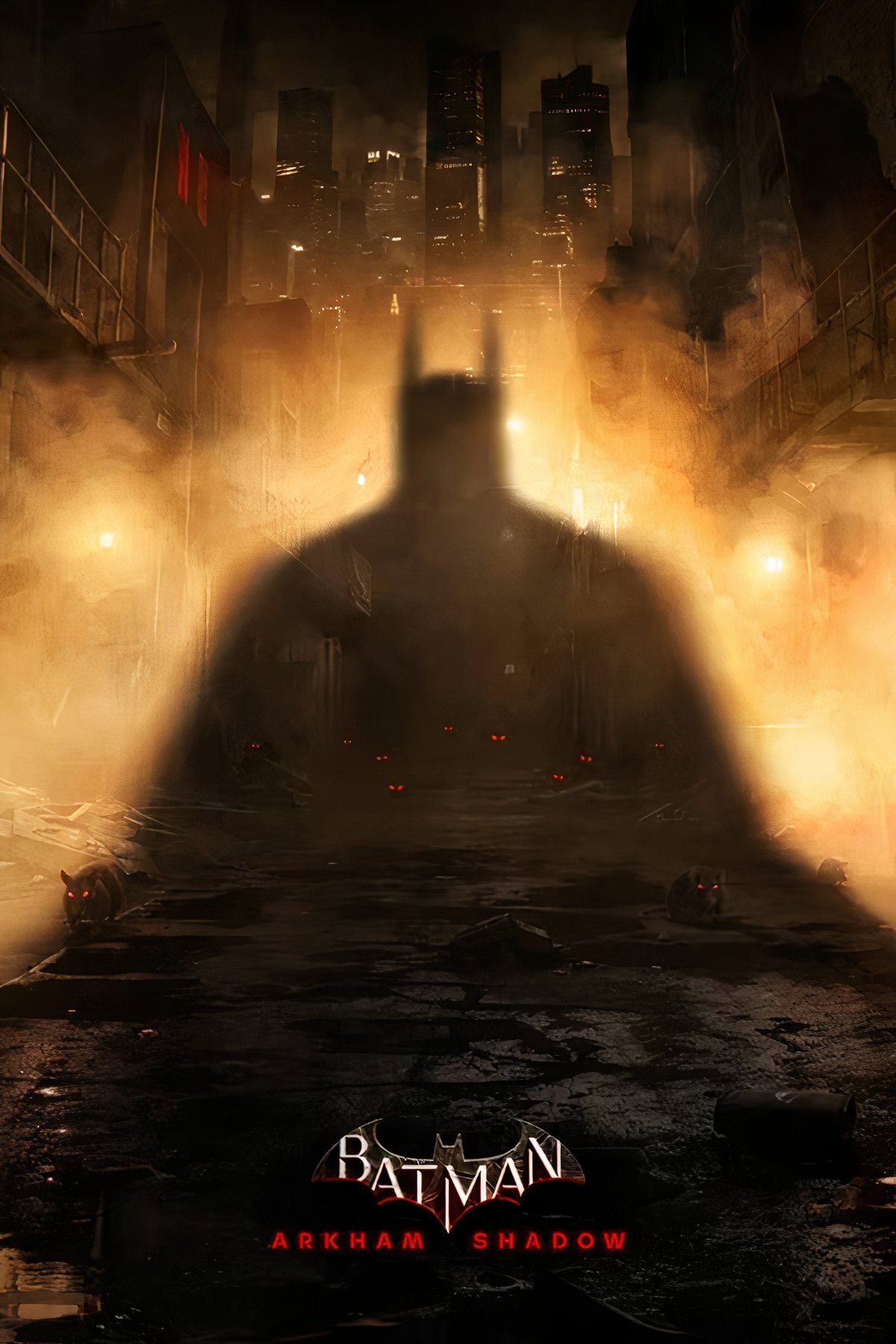The Arkhamverse’s gameplay formula is timeless, and its rich worldbuilding enables it to have as long a shelf life as possible as there are interesting layers to peel back on a remarkable character, setting, or event. Batman: Arkham Shadow is fascinating for a handful of reasons; for example, it provided a devastating origin story for Harvey Dent’s Two-Face, debuted a sympathetic enemy faction with the Rat King’s Rat loyalists, and finally revealed the Arkhamverse’s Carmine Falcone in-game. Between Batman: Arkham Origins, Batman: Arkham Origins Blackgate, and Batman: Arkham Shadow, the Arkhamverse has thoroughly and successfully demonstrated the value of prequel entries.
Rocksteady is reportedly working on a new Batman game now that the dust has settled on Suicide Squad: Kill the Justice League and, while it could reasonably be a prequel game itself, it’s expected to continue pushing the Arkhamverse forward in the present day—perhaps even leaping ahead to the future for an adaptation of Batman Beyond. Either way, if there are to be sequels to Batman: Arkham Shadow, developed by Camouflaj for VR and/or by other studios for flatscreen platforms, they will hopefully all take their sweet time and not hurry to reach Batman: Arkham Asylum’s point in the timeline so that Arkham games in the prequels can milk that precious era of the franchise for all it’s worth.

Related
A Batman: Arkham Shadow Sequel Can’t Leave One Gadget to Rot in Batman: Arkham Origins’ Tomb
With a foundation now for Batman: Arkham Shadow to spring forth from, one other Batman: Arkham Origins gadget will hopefully be reprised.
Batman’s Arkhamverse Prequels Should All Be Tight-Knit for Longevity’s Sake
Batman: Arkham Shadow takes place three months after Batman: Arkham Origins Blackgate and six months after Batman: Arkham Origins. In this time, it’s exceptional to see how much character development is afforded and this shorter, more granular pace is considerably easier to follow than the disjointed and distanced nature of Batman: Arkham Asylum, Batman: Arkham City, and Batman: Arkham Knight’s connective tissue.
The Arkhamverse has shown how much can occur in a single night on Batman’s watch, and yet the prequels’ overall span of only half a year is microscopic compared to the two-year span of Rocksteady’s Arkham trilogy with Suicide Squad: Kill the Justice League then jumping ahead five years after Knight. It’s this solidarity that creates an interconnectivity and sense of immediate continuity between each prequel game, which Shadow is incredibly faithful and beholden to as it, too, is set almost entirely within the questionable confines of Blackgate.
The issue with a sequel jumping too far ahead now from when Shadow takes place is that it would unavoidably overlook or dismiss a paramount event. There are still years between Shadow and Asylum, but those years are all sacred and ripe with installment potential. Indeed, some of the most profound narrative beats that occur in this gap include:
- Barbara Gordon becoming Batgirl before eventually being shot and paralyzed by Joker, as witnessed in Batman: Arkham Knight’s hallucinatory flashback.
- Dick Grayson becoming Robin before eventually becoming Nightwing and moving to Bludhaven.
- Jason Todd becoming Robin and presumably being killed by Joker, as witnessed in Batman: Arkham Knight’s hallucinatory flashback.
- Tim Drake becoming Robin, which must be while Barbara is Batgirl, as seen in Batman: Arkham Knight’s “A Matter of Family” DLC.
- Bruce Wayne meeting Ra’s al Ghul (who he’s apparently encountered “many times” by Batman: Arkham City) and having a passionate relationship and fallout with Ra’s’ daughter, Talia.
- Arkham Asylum’s reopening via Warden Quincy Sharp, Professor Hugo Strange, and the League of Assassins’ Shiva, as discreetly and loosely alluded to in Batman: Arkham Origins and Batman: Arkham City.
- Pamela Isley becoming Poison Ivy, which is inferred to have occurred on November 12 with her 41st patient interview tape from Batman: Arkham Asylum being on its “anniversary.” It is unknown if this tape was recorded around the same time as Asylum’s events or long before, but Batman: Arkham Shadow’s Poison Ivy tease seems to suggest that her origin story occurs years earlier in the timeline (which, retcon or not, would be ideal since it’d keep the gap between Shadow and Asylum wide and plentiful).

Related
How a Catwoman Arkham Game Could Basically Write Itself
Batman: Arkham City introduced Catwoman to the Arkhamverse and the bones of her DLC should be repurposed as a vehicle for her own game.
Batman’s Arkhamverse Needs to Pick Its Battles Carefully and Not Progress the Timeline Idly
The Arkhamverse would miss out on a gargantuan opportunity and attempt to depict all of these beats with their own games in order to maintain a steady heartbeat for the franchise for the foreseeable future. How Batman and his enemies interact with one another in Asylum suggests that there has been quite a long time between when he first encountered them and when the game takes place.
Not every act of crime a villain commits may be epic or significant enough to warrant its own representation in a game—Two-Face’s bank robberies in Knight arguably wouldn’t have been worth their own game, for instance, while Harvey Dent’s elusive and short-lived reign as the Rat King certainly was.
Still, any new entry into this franchise should hope to flesh out the timeline’s gaping chasms meaningfully. Otherwise, the sooner the Arkhamverse’s prequel well dries up the sooner the franchise truly will have overstayed its welcome unless Rocksteady is able to bring the series into a brand-new era with whatever it’s working on now. Therefore, a sequel taking place shortly after Shadow would be wonderful since it could tie up that game’s loose ends and still have its own plethora of authentic stories to tell.













Leave a Reply